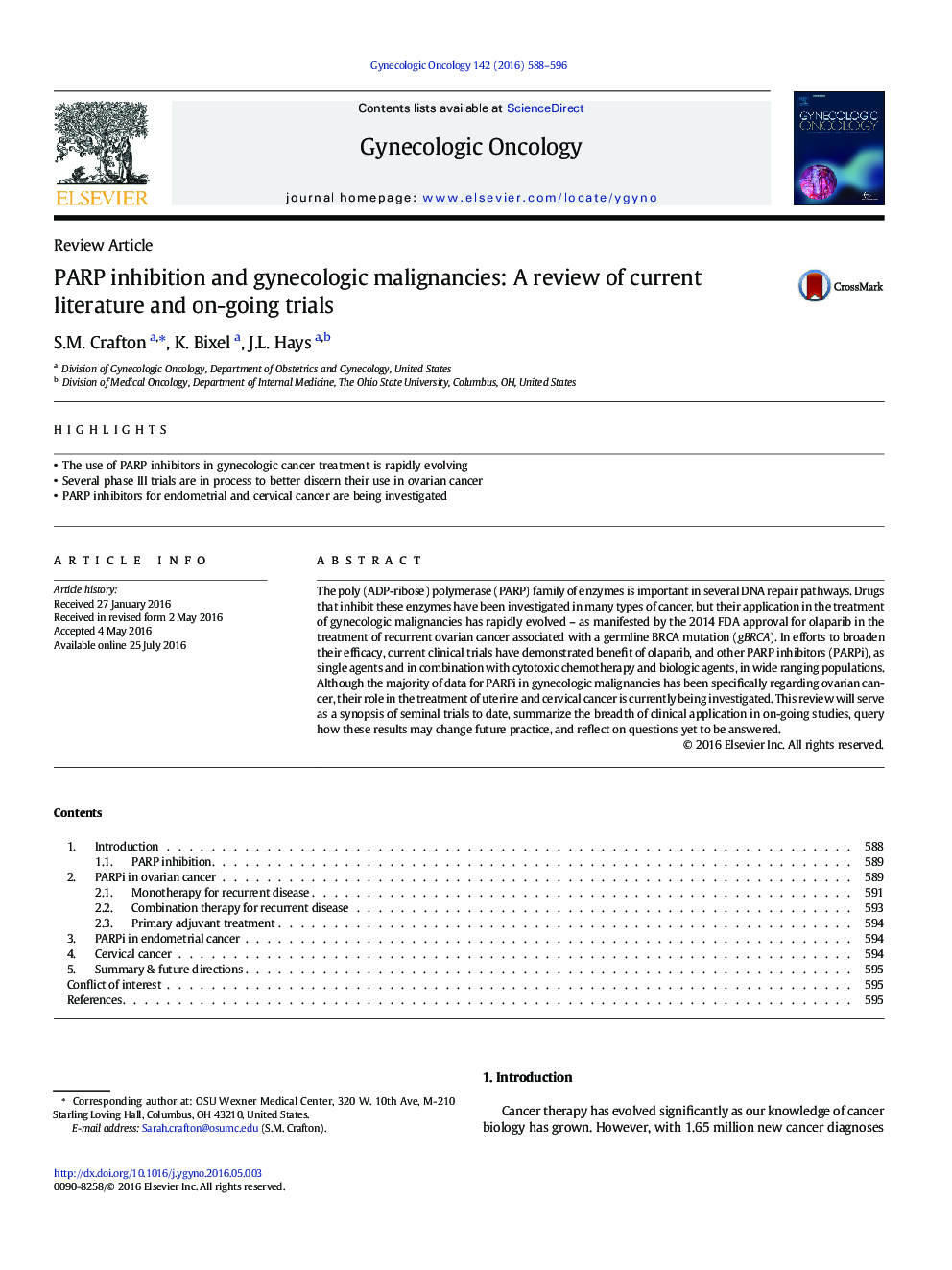| Article ID | Journal | Published Year | Pages | File Type |
|---|---|---|---|---|
| 6183021 | Gynecologic Oncology | 2016 | 9 Pages |
â¢The use of PARP inhibitors in gynecologic cancer treatment is rapidly evolvingâ¢Several phase III trials are in process to better discern their use in ovarian cancerâ¢PARP inhibitors for endometrial and cervical cancer are being investigated
The poly (ADP-ribose) polymerase (PARP) family of enzymes is important in several DNA repair pathways. Drugs that inhibit these enzymes have been investigated in many types of cancer, but their application in the treatment of gynecologic malignancies has rapidly evolved - as manifested by the 2014 FDA approval for olaparib in the treatment of recurrent ovarian cancer associated with a germline BRCA mutation (gBRCA). In efforts to broaden their efficacy, current clinical trials have demonstrated benefit of olaparib, and other PARP inhibitors (PARPi), as single agents and in combination with cytotoxic chemotherapy and biologic agents, in wide ranging populations. Although the majority of data for PARPi in gynecologic malignancies has been specifically regarding ovarian cancer, their role in the treatment of uterine and cervical cancer is currently being investigated. This review will serve as a synopsis of seminal trials to date, summarize the breadth of clinical application in on-going studies, query how these results may change future practice, and reflect on questions yet to be answered.
